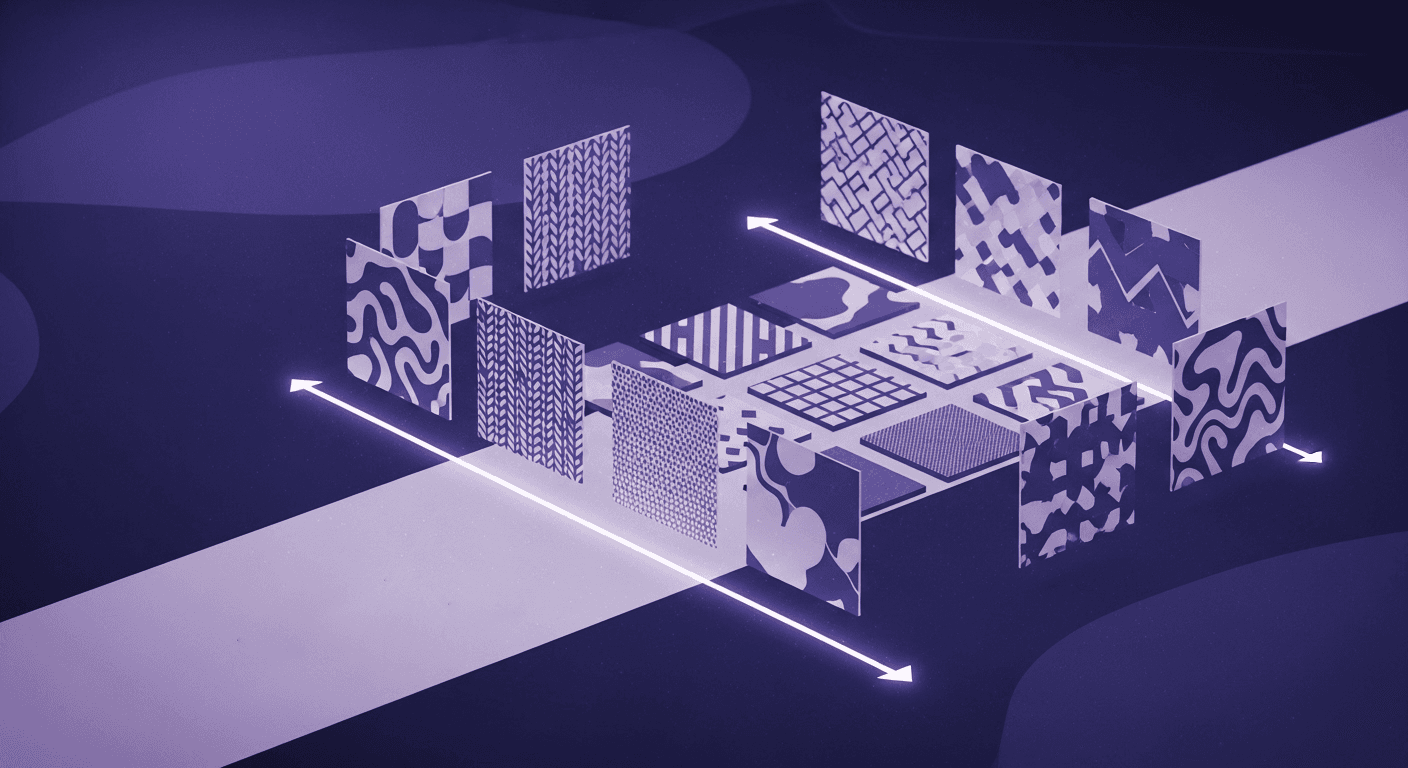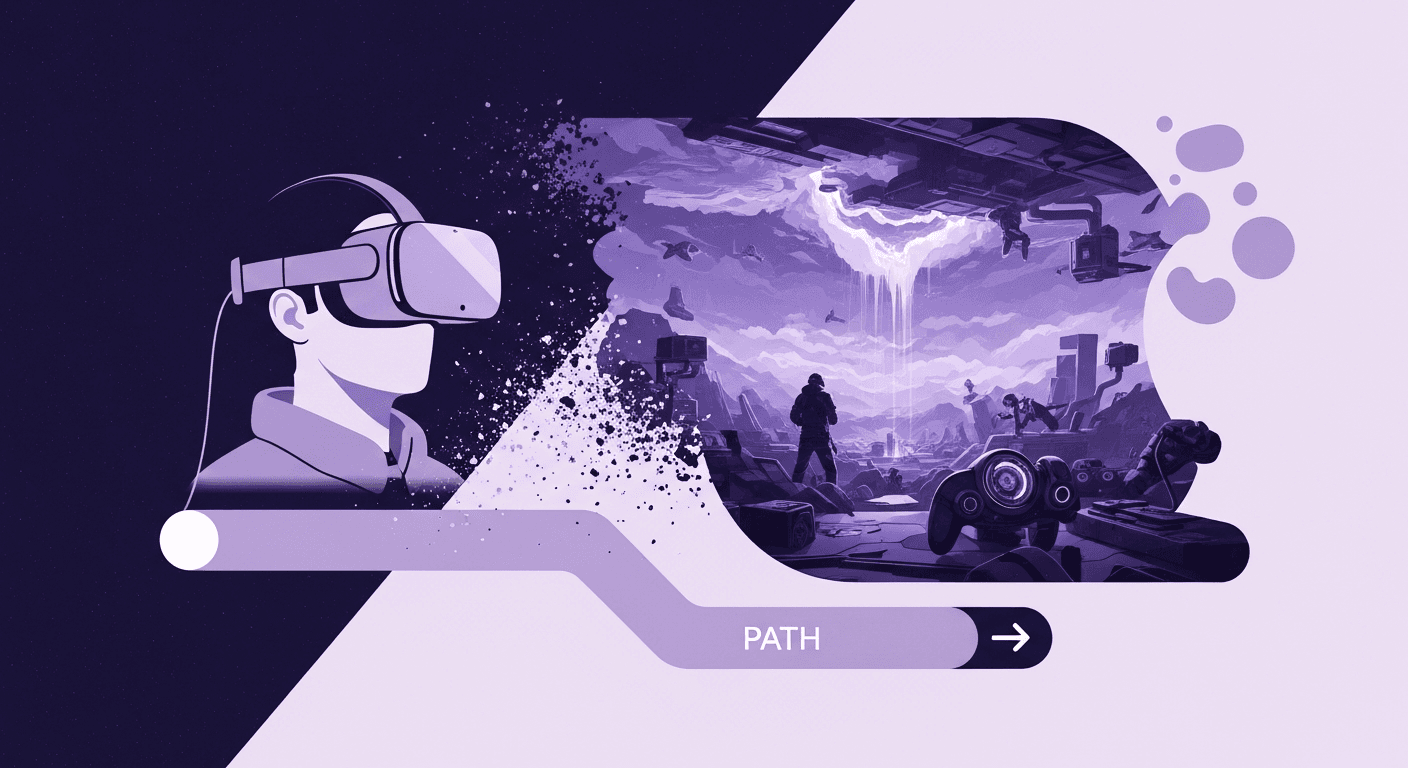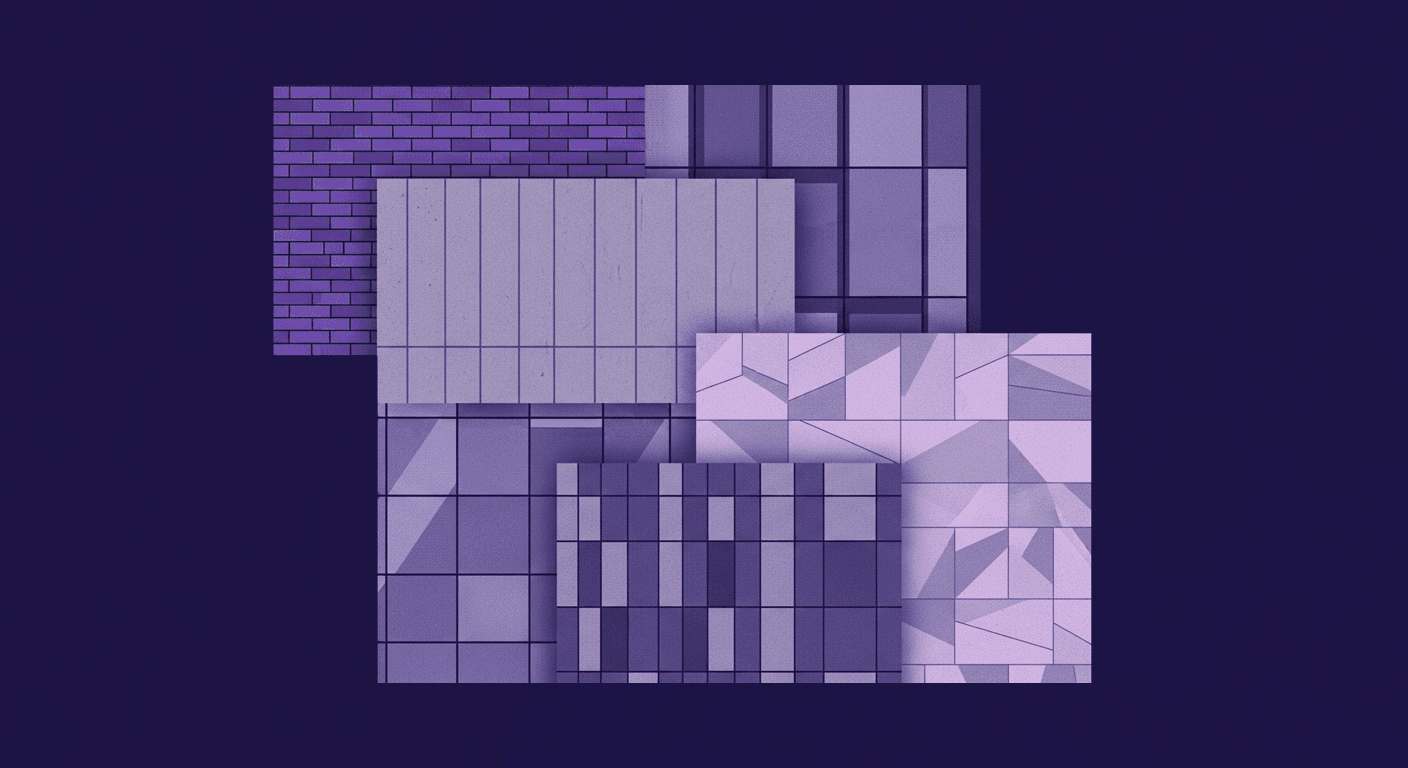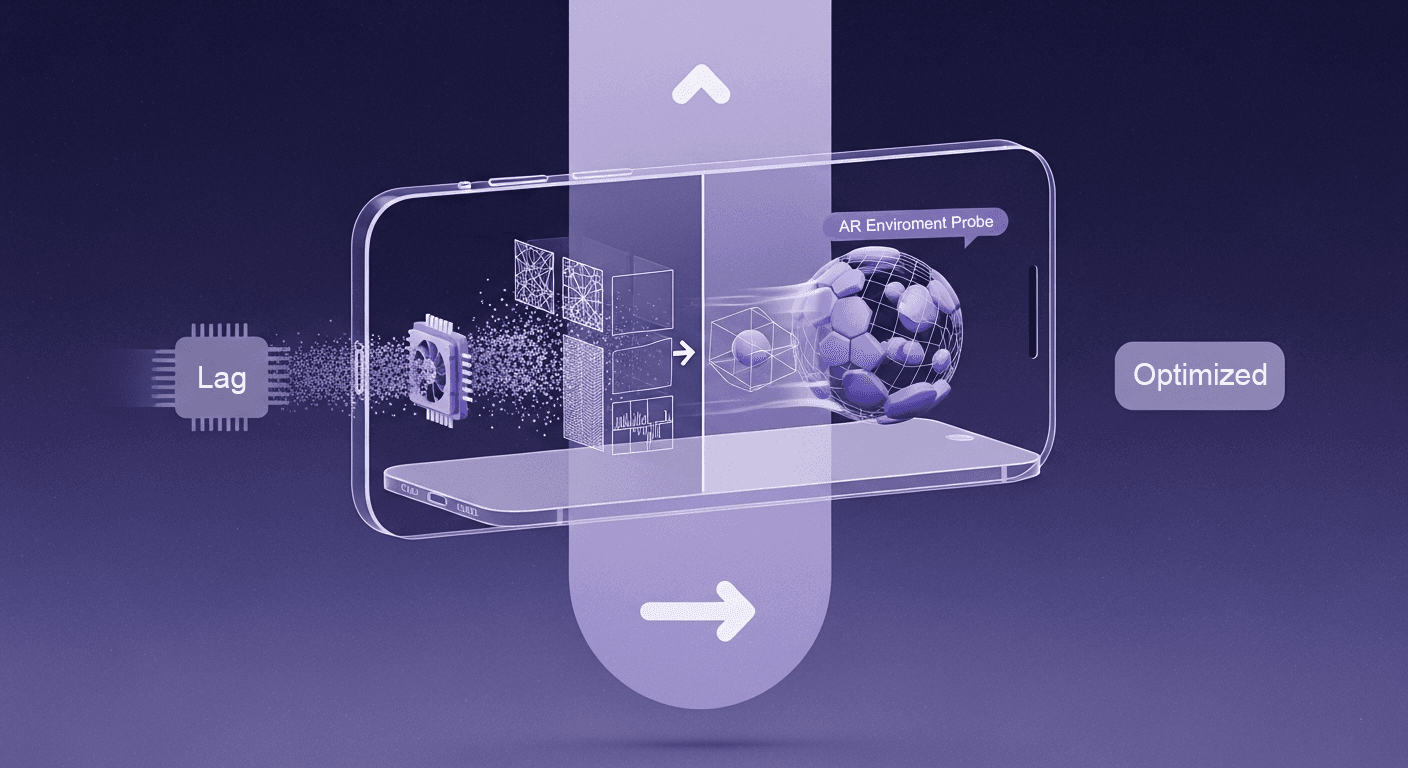Engineer Emotional Connections Through Strategic Textile Innovation
By Mira Kapoor | 10 October 2025 | 12 mins read
Table of contents
Table of Contents
For most design teams, texture is the final checkbox. The color story is set, the silhouette is locked, and the material is chosen almost as an afterthought. But what if texture wasn’t the end of the process but the beginning of innovation? In an era where visuals dominate every feed and shelf, the true differentiator lies in what can’t be seen: the tactile, emotional language of materials. This guide moves beyond aesthetic trends to explore how texture can be engineered as a strategic design tool shaping not just how a product looks, but how it feels, connects, and endures.

Beyond the surface: Why texture matters now
The role of texture has shifted dramatically. Once a finishing touch, it has become a defining element of brand identity and user experience. In today’s saturated visual landscape, where digital screens flatten every nuance, texture reintroduces depth, both physical and emotional.
This is more than a question of form; it’s a question of psychology and differentiation. The feel of a product activates instinct, emotion, and memory in ways color and silhouette alone cannot. It’s the bridge between design and desire, a silent communicator that signals quality, honesty, and innovation.
For brands competing in markets of sameness, texture is now the frontier of distinction. It’s how you make your products and your story tangible.
Unpacking textile texture psychology
Think of the last product you truly loved. Chances are, you can recall how it felt in your hands. That’s because touch is one of our most primal senses, hardwired directly to emotion and memory. The design sensory experience isn't just a buzzword; it’s a neurological reality. A coarse, nubby linen doesn't just look rustic, it feels honest, grounded, and natural. A slick, cool-to-the-touch technical nylon communicates efficiency, speed, and the future.
This is textile mood creation in action. You’re not just choosing a material; you’re programming a subconscious response. Your customer isn’t thinking, “This 12-gauge knit has a wonderful hand-feel.” They’re thinking, “This feels cozy. This feels safe. This feels like quality.” The most innovative teams aren’t just designing objects; they are engineering feelings, and the primary tool for that is texture.
How tactile experience shapes perception and value
This sensory experience scales up directly to brand perception. A heavy, substantial texture can communicate luxury and durability, justifying a higher price point before a customer ever looks at the tag. Conversely, a flimsy, synthetic-feeling fabric can undermine an otherwise brilliant design. This is where the work you do in material innovation pays off; it builds a tangible sense of value.
Consider the unboxing experience. The slide of a rigid box, the crinkle of tissue paper, and finally, the feel of the garment itself. Each textural touchpoint is a micro-interaction that either builds or erodes brand trust. A consistent textural identity, whether it’s the ruggedness of raw denim or the buttery softness of premium leather, becomes a brand signature. It’s what makes a product feel unmistakably yours.
So, as we explore the emerging trends in textile texture design, the goal isn’t just to spot what’s new. It’s to understand the “why” behind these trends and how you can use them to tell a more compelling story. The next wave of innovation isn’t just about what you can see; it’s about what you can feel.
The key textile textures trends on the horizon
Now for the fun part, what’s actually new and what’s next. The most exciting textile textures trends aren’t happening in a vacuum. They’re a direct response to our growing need for sustainability, our integration with technology, and a collective desire for more tangible, human experiences. These aren't just fleeting fads; they represent fundamental shifts in how we create and interact with materials.
Trend 1: Bio-based and regenerative surfaces
For years, sustainability felt like a compromise, often resulting in textures that were well-intentioned but lacked the performance or luxury of traditional fabrics. That’s no longer the case. The latest material innovation is delivering surfaces that are not only eco-friendly but also sensorially unique and compelling.
We're moving beyond early-stage recycled polyesters. Think mushroom leather like Mylo™, which offers a supple, warm feel that rivals animal hides, or Piñatex®, a non-woven textile made from pineapple leaf fiber with a natural, slightly irregular grain. Then there’s Orange Fiber, a silk-like fabric made from citrus juice byproducts, which is impossibly soft and drapes beautifully. These aren’t just substitutes; they are entirely new textural categories.
What makes these materials strategic is the story they carry. Their unique fabric surface characteristics, the subtle imperfections in a plant-based leather, or the specific luster of a fruit-derived silk become part of the brand narrative. This aligns perfectly with sustainable design goals because the texture itself communicates a commitment to the planet. It’s a story you can feel.
Trend 2: digitally-crafted and parametric textures
This is where your work in tech and design truly converges. Technology and innovation are changing textile textures by moving the design process off the loom and onto the screen. Using parametric design tools and AI, you can generate and prototype unique fabric surfaces that would be impossible to sketch by hand.
Imagine creating a weave that algorithmically mimics the patterns of water ripples or cellular growth. With tools like Rhino and Grasshopper, designers are creating 3D models of textiles, tweaking variables like yarn thickness, weave density, and pucker intensity in real-time. This allows you to create a digital twin of a fabric before a single thread is woven. You can see how it drapes, how it catches the light, and with haptic technology on the horizon, even get a sense of how it might feel.
This workflow radically accelerates innovation. Instead of waiting weeks for physical samples from a mill, you can cycle through hundreds of textural iterations in an afternoon. This is how you develop a truly proprietary fabric surface that no one else has. It’s a powerful way to embed your brand’s digital-first identity directly into the physical product.
Trend 3: Hyper-tactile and sculptural finishes
In a world dominated by smooth glass screens, there’s a growing craving for rich, tangible, and even exaggerated textures. We’re seeing a shift away from flat design and toward surfaces with real depth and dimension. This isn’t just about a heavy knit; it’s about creating sculptural forms with fabric itself.
Techniques like 3D knitting, digital puckering, and laser-cut appliqué are pushing the boundaries. Think of the intricate, algorithmically generated pleats in the work of Iris van Herpen, or the seamless, body-mapped textures in high-performance apparel that enhance breathability and aerodynamics. These aren’t just decorations; they’re functional and intentional.
Exaggerated weaves, chunky bouclés, and complex smocking create surfaces that invite touch. They make a garment or a piece of home decor feel more substantial and engaging. This trend is a direct counterpoint to our digital lives, offering a form of sensory grounding. For an innovator, this means exploring how to add dimension and structure in unexpected ways, turning a simple surface into a topographical landscape.
Applying the trends: A practical guide for innovators
Understanding the trends is one thing. Integrating them into a real-world design and production pipeline is another challenge entirely. It requires a new way of thinking about materials not as single choices, but as components in a larger system. Here’s a practical framework for bringing these ideas to life.
How to effectively mix and match different textile textures
Layering textures can quickly go from compelling to chaotic. The key is to create a clear hierarchy. Instead of throwing things together, think like a composer arranging an orchestra, every instrument has a role. A simple framework we use is Anchor, Accent, and Amplify.
- Anchor: This is your foundational texture. It’s likely the most used material in the design and sets the overall mood. It should be strong but not overpowering. Think of a smooth, bio-based leather or a classic wool serge. Its job is to provide a calm, confident base.
- Accent: This is where you introduce contrast. Pair your smooth anchor with a hyper-tactile, 3D-knitted panel or a digitally puckered silk. The accent texture should be used more sparingly to draw the eye and create a point of interest. It’s the surprising element that makes the design memorable.
- Amplify: This is a subtle, supporting texture that enhances the other two without competing. It could be a simple trim, a lining, or a small detail. For example, if your anchor is matte, your amplifier could have a slight sheen. It adds depth and a sense of completeness.
Balancing visual interest with functional application is critical. A sculptural, open-weave knit might be a stunning accent on the sleeve of a jacket, but it wouldn't work for the seat of a chair. Map your textural choices to the product's end-use to ensure the final design is both beautiful and practical.
Integrating sustainable approaches to textile textures into your workflow
Making the switch to sustainable materials goes beyond just swapping fabrics. It requires a deeper engagement with your supply chain and a clear-eyed view of the material lifecycle. You need to become an expert interrogator in a good way. Here are the questions you should be asking your suppliers:
- Origin: Where do the raw materials come from? Are they from a certified regenerative farm? Is the feedstock a post-consumer waste product?
- Process: What chemicals, water, and energy are used to turn the raw material into a textile? Are they using a closed-loop system? Do they have certifications like Oeko-Tex or Bluesign?
- End-of-life: What happens to this material when the product is no longer in use? Is it biodegradable? Can it be composted? Is it designed for disassembly and recycling?
Making the business case for these choices is the final and most important step. It's not just about corporate responsibility. It’s about risk management (a more resilient supply chain), market demand (consumers increasingly prefer sustainable brands), and brand value (a powerful story to tell). Frame your pitch around these pillars, and you’ll find that eco-friendly textile choices aren't a cost center; they’re a strategic investment.
Leading with an edge: Using texture as a strategic tool
You’ve explored the trends, and you have a framework for application. Now it’s time to use that knowledge as a competitive weapon. In a crowded market, innovative textile design is one of the fastest ways to make your collections stand out. It’s a language that speaks to quality, creativity, and forward-thinking before you’ve said a single word.
How innovative textile design can differentiate a collection
Think about brands that have built an empire on a texture. Bottega Veneta's intrecciato weave is so iconic that it doesn't even need a logo. Brunello Cucinelli is synonymous with the impossibly soft feel of its cashmere. These companies didn't just choose a fabric; they owned a texture. It became their signature, a tactile shorthand for their entire brand ethos.
Here’s a real-world example: A performance-wear startup was competing with industry giants. Instead of trying to out-market them, they focused on developing a unique, 3D-knitted compression fabric with a proprietary hexagonal pattern. It wasn’t just visually distinct; the texture provided zoned support and breathability. They won on feel and function, creating a loyal following that couldn't get that specific sensory experience anywhere else.
To do this systematically, you need to build a material library. Not just a shelf of swatches, but a strategic asset. Catalog fabrics not just by composition, but by their sensory properties, their story, and their potential applications. This library becomes an engine of inspiration for your entire design team, sparking new ideas and ensuring that material innovation is baked into your process from day one.
From concept to reality: Making the case for new textures
Having great ideas is half the battle. The other half is getting buy-in from stakeholders who are looking at spreadsheets and timelines. When you present emerging trends in textile texture design, you can't just show a mood board. You need to speak their language.
Here’s how to frame your pitch:
- Lead with the ROI. Connect new textures to tangible business outcomes. “This bio-fabricated leather not only supports our sustainability goals but also allows us to tap into the premium conscious consumer market, where margins are 15% higher.”
- Highlight speed and efficiency. This is where digital prototyping shines. “By developing these parametric textures digitally, we can cut our material development timeline from three months to three weeks, allowing us to respond to market trends faster.”
- De-risk the innovation. Show that you’ve done your homework. “We’ve vetted three suppliers for this new material. It meets our performance standards, and we can launch with a small capsule collection to test the market before a full rollout.”
By aligning material choices with company goals for innovation, speed, and sustainability, you transform the conversation. You’re no longer a designer asking for a bigger budget. You’re a strategic leader identifying an opportunity for growth and a competitive advantage. And that’s a conversation everyone wants to be a part of.
Making texture your signature
So, what’s the real takeaway here? It’s not a specific mushroom leather or a new 3D knitting technique. The most valuable insight isn't a trend at all, it’s a shift in perspective.
Texture is no longer the last item on your checklist. It’s your new strategic starting point.
When you walk into your next strategy meeting, you’re not just presenting a material swatch; you’re presenting a competitive edge. You have the framework to talk about parametric patterns in terms of faster prototyping and reduced waste. You can pitch a regenerative fabric as a tool to capture a high-value, conscious market. You’re not just choosing surfaces; you’re building a sensory lexicon for your brand, a signature that can be felt, not just seen.
This is the difference between leading a design team and leading the market. The most memorable products of the next decade won't just be seen; they will be felt. The only question is whether they’ll have your signature on them.

Mira Kapoor
Mira leads marketing at Texturly, combining creative intuition with data-savvy strategy. With a background in design and a decade of experience shaping stories for creative tech brands, Mira brings the perfect blend of strategy and soul to every campaign. She believes great marketing isn’t about selling—it’s about sparking curiosity and building community.
Latest Blogs

Your Skybox Is Wearing Thin: How 360 Textures Became the Engine
AI in 3D design
3D textures

Max Calder
Nov 28, 2025

More Than Skin Deep: How Facade Textures Drive Building Performan...
Industry trends
Texture creation

Mira Kapoor
Nov 26, 2025

From Pixelated Mess to Polished AR: Debug ARKit Texture Generator...
AI in 3D design
Texture creation

Max Calder
Nov 24, 2025
